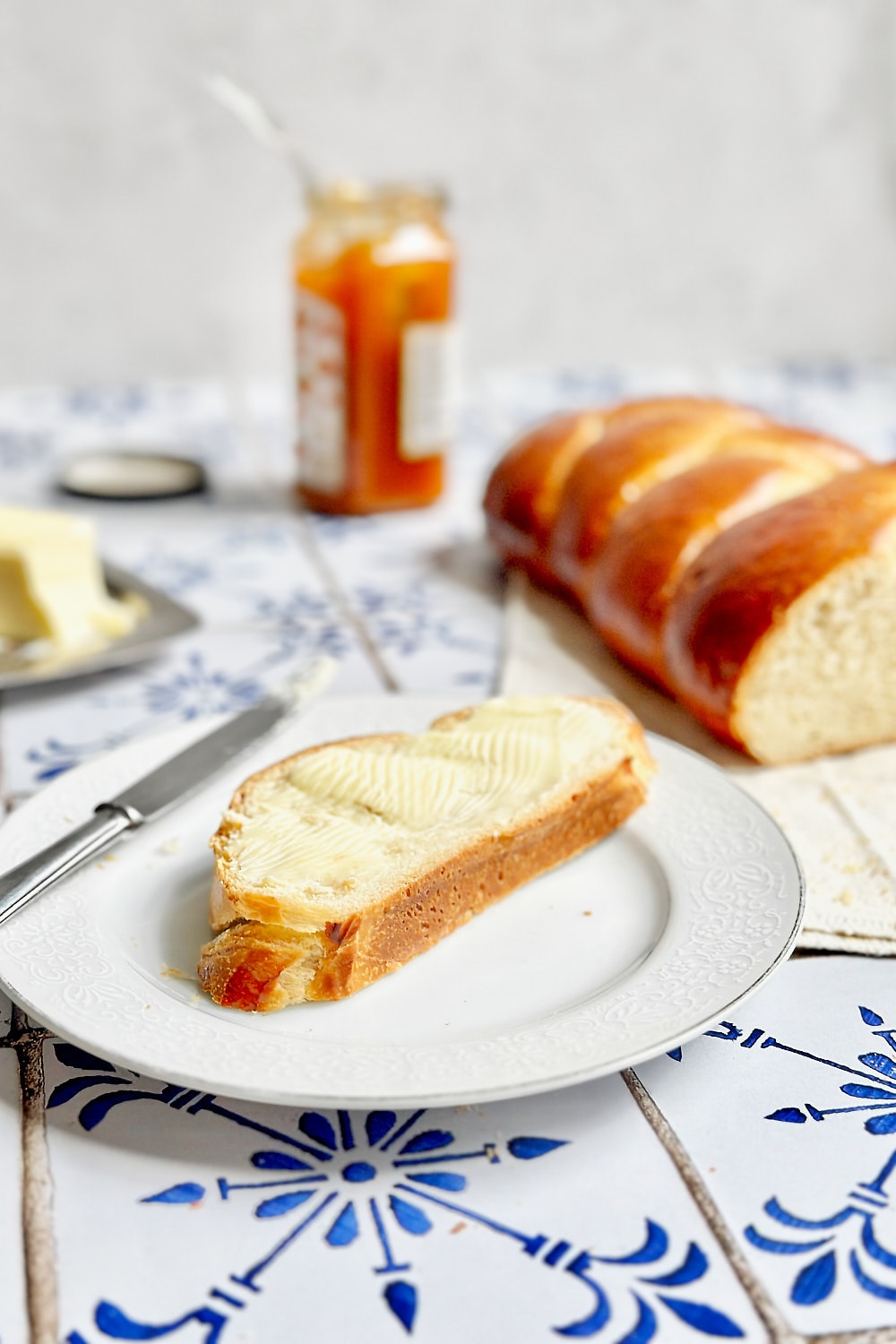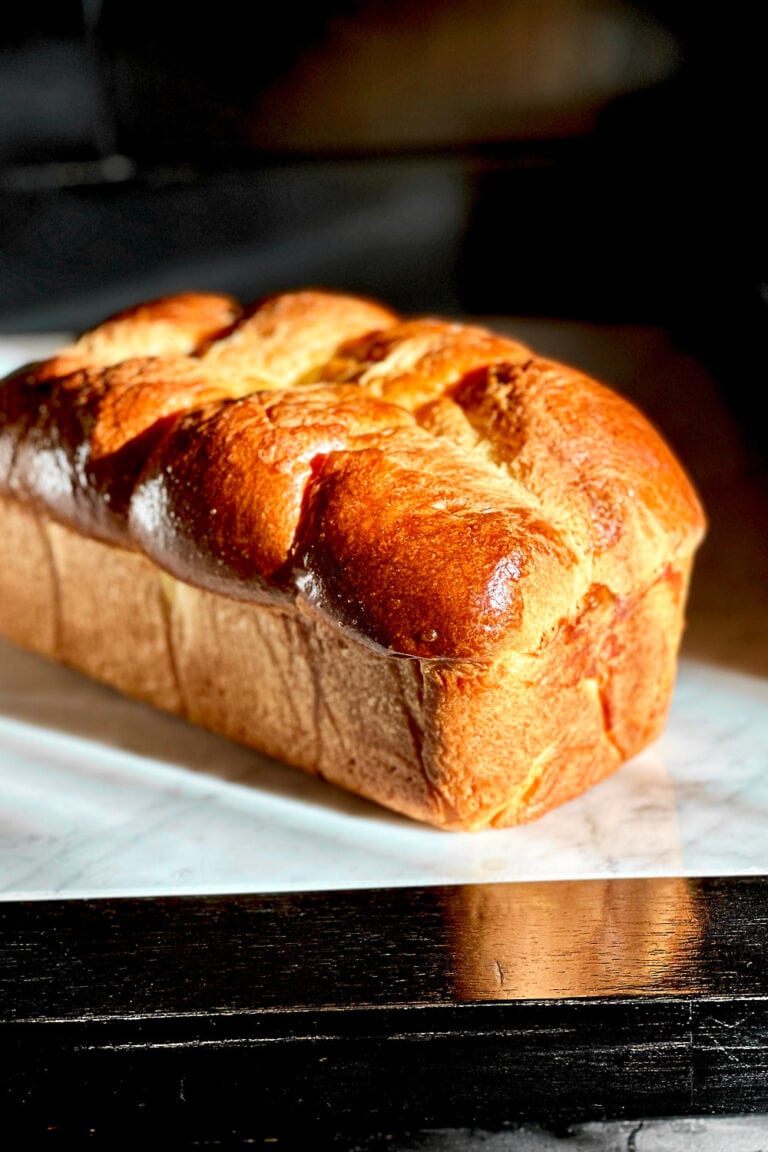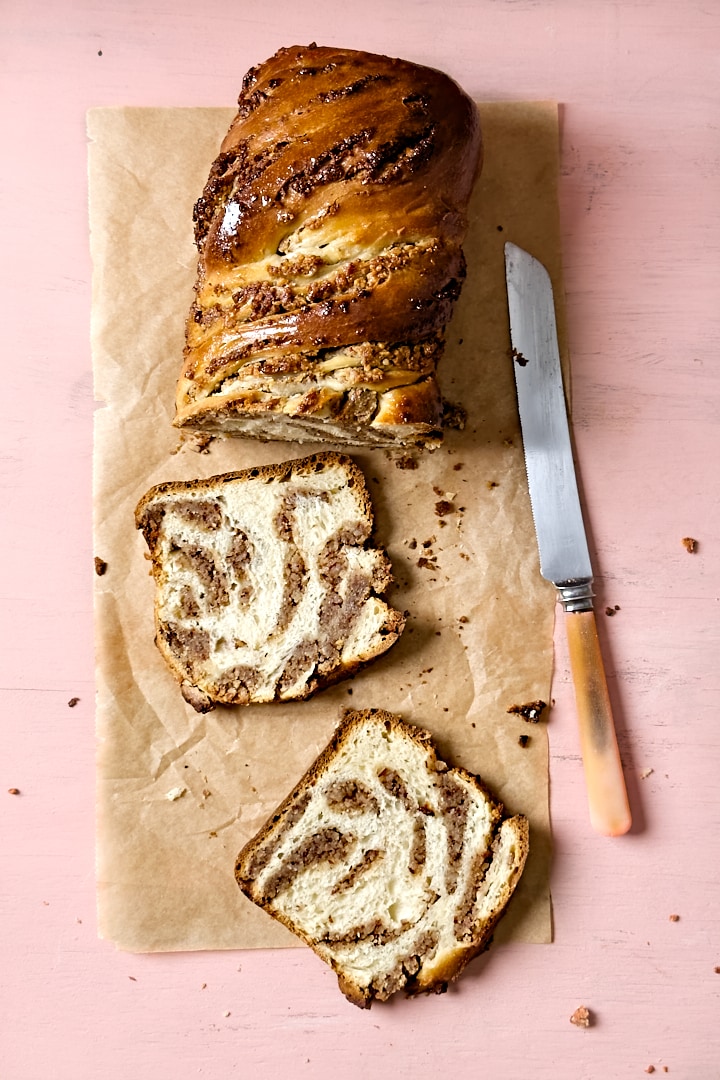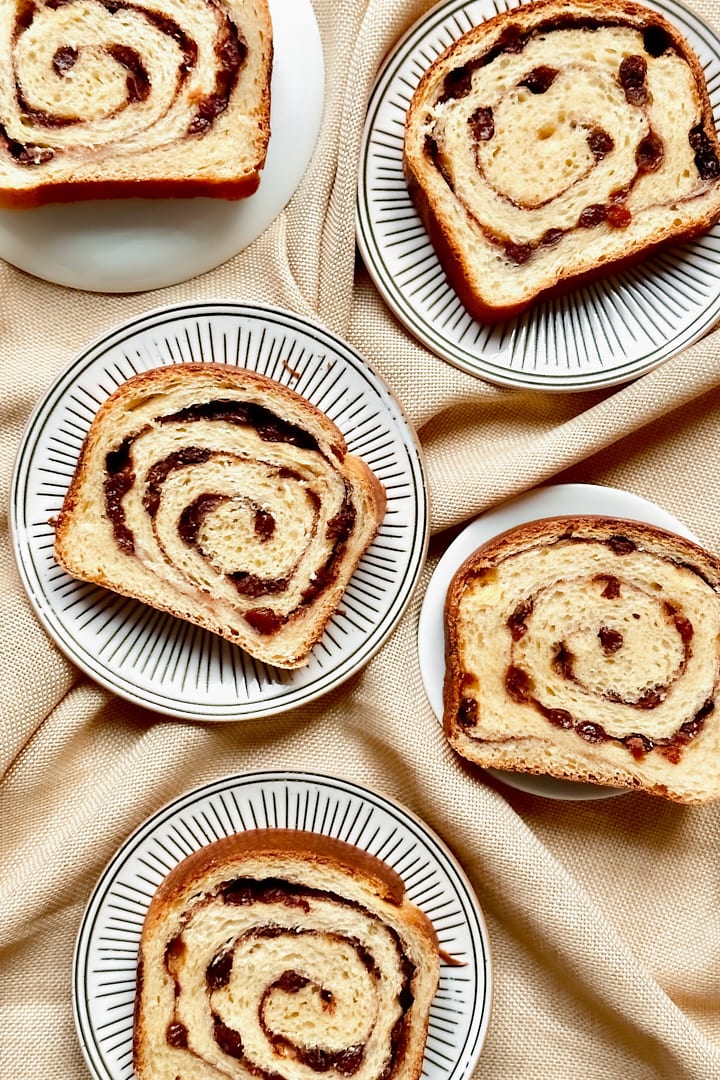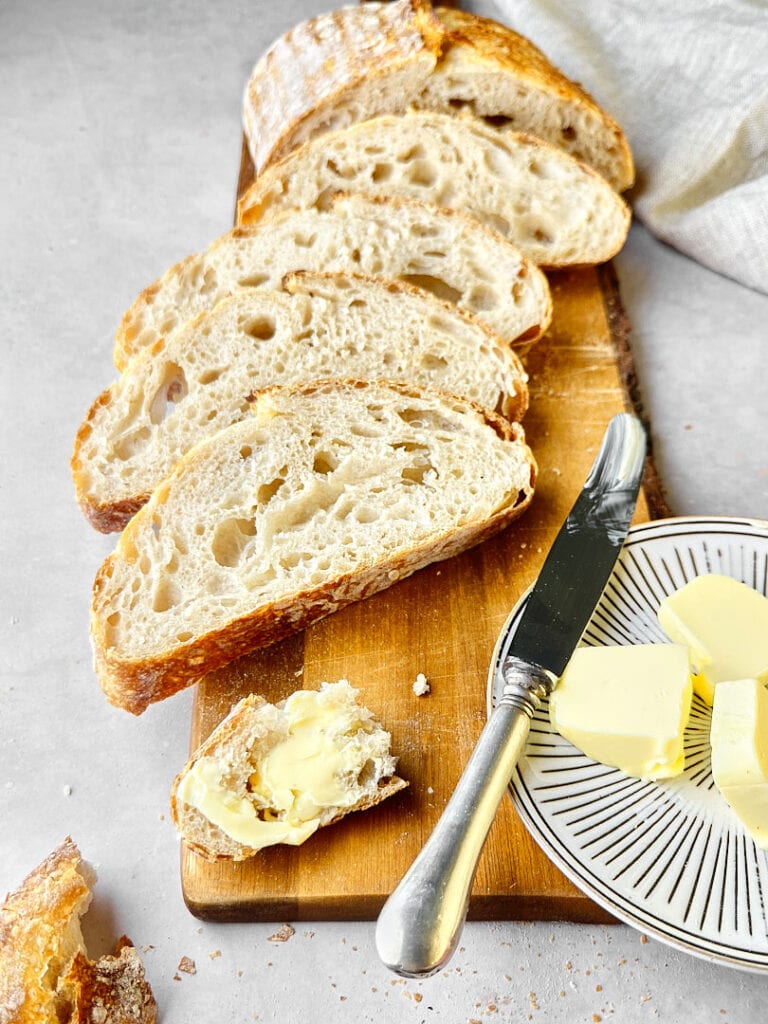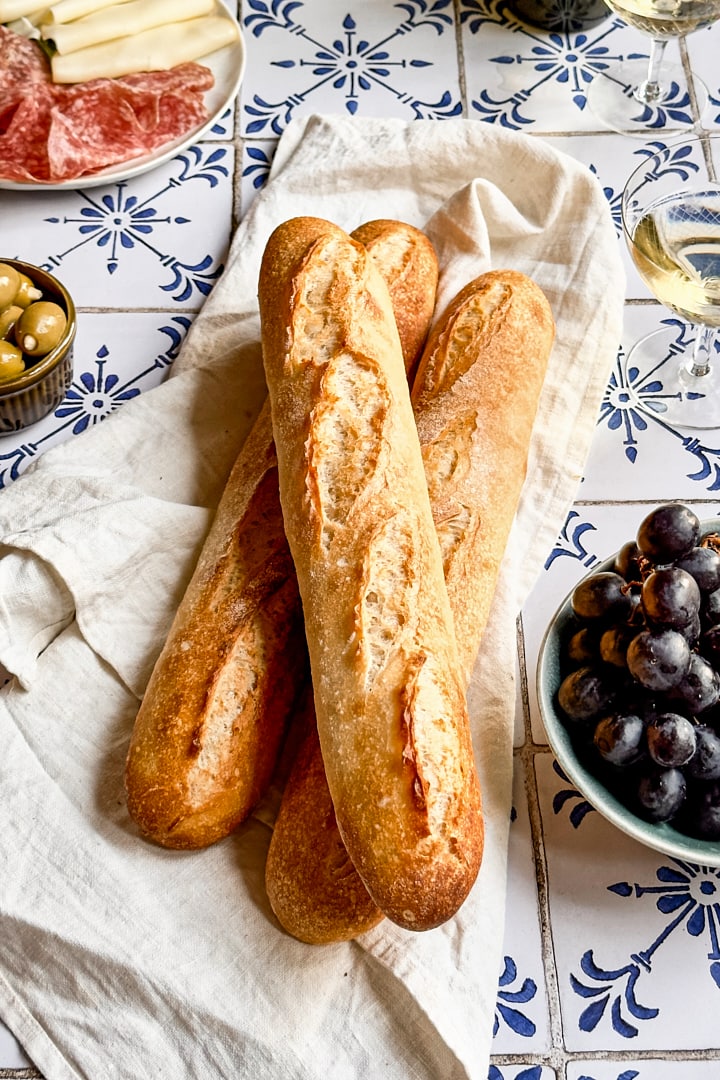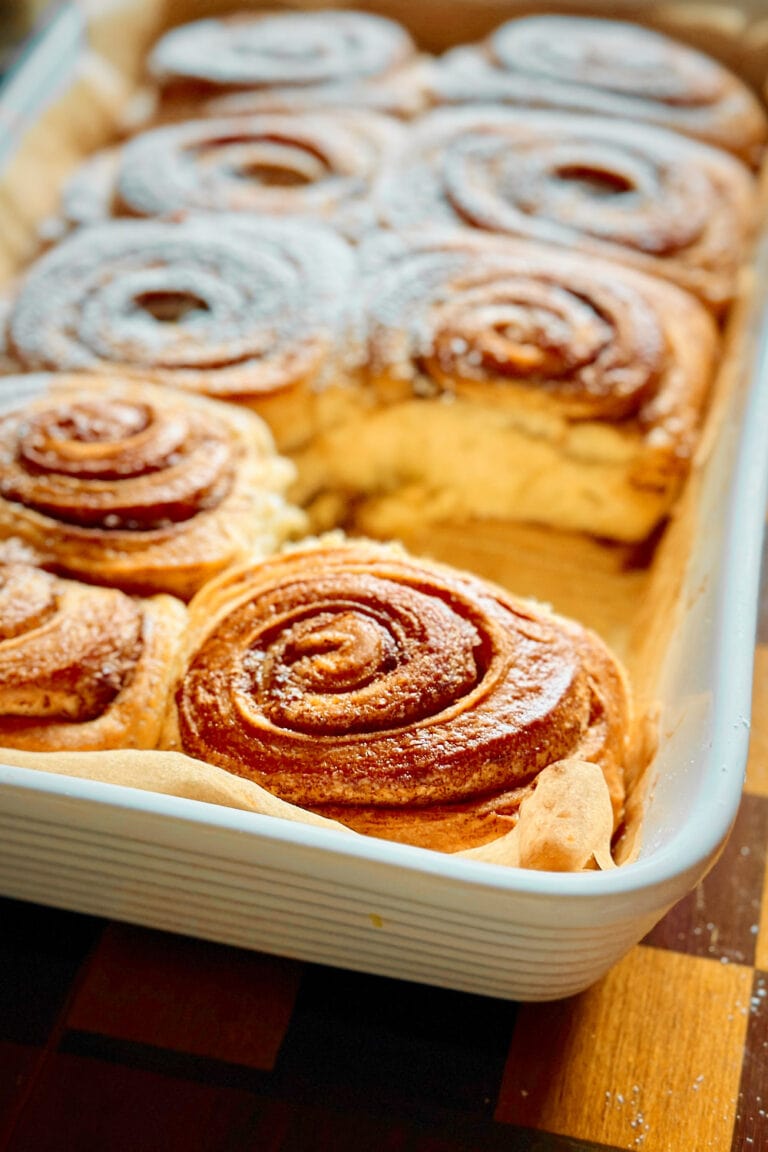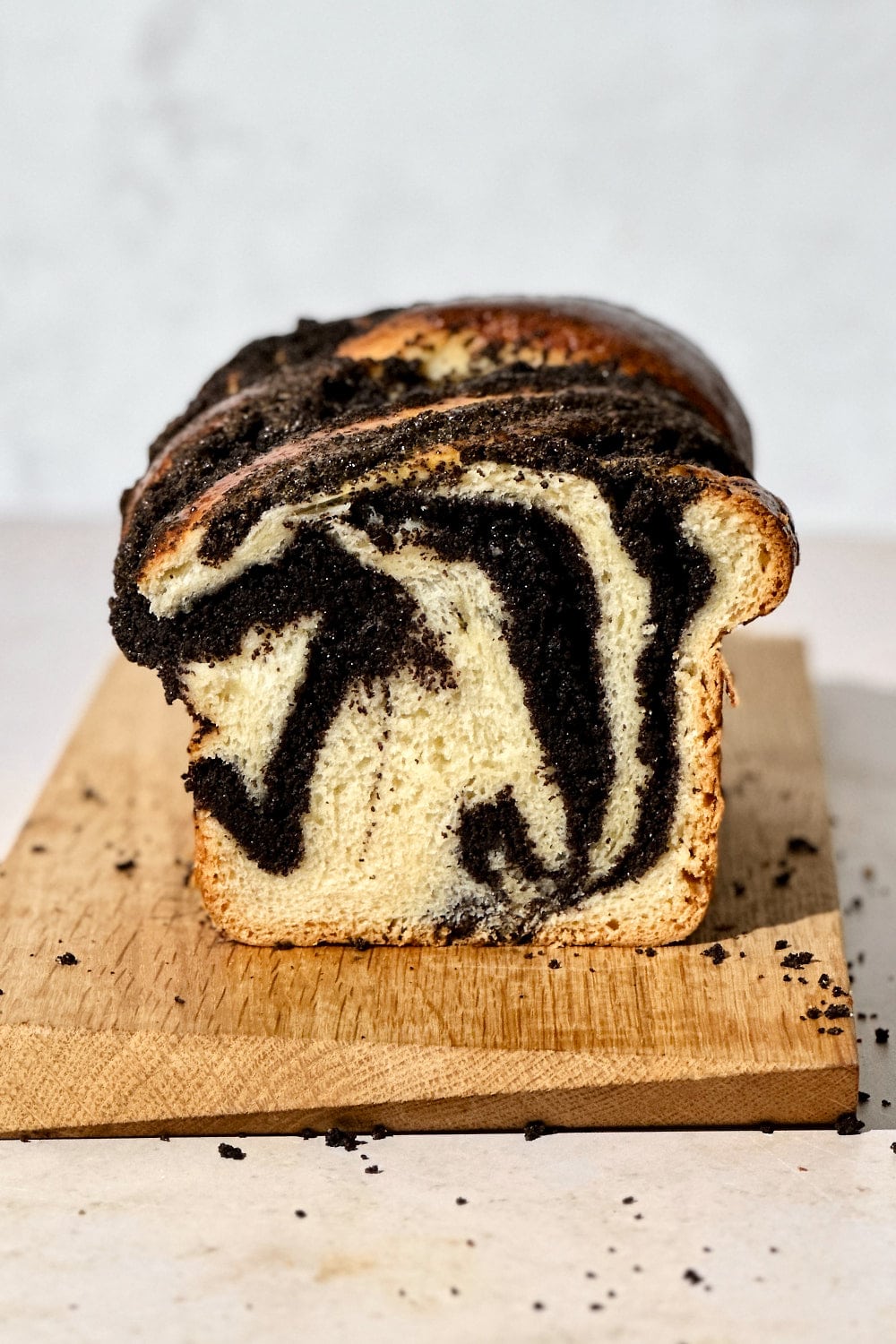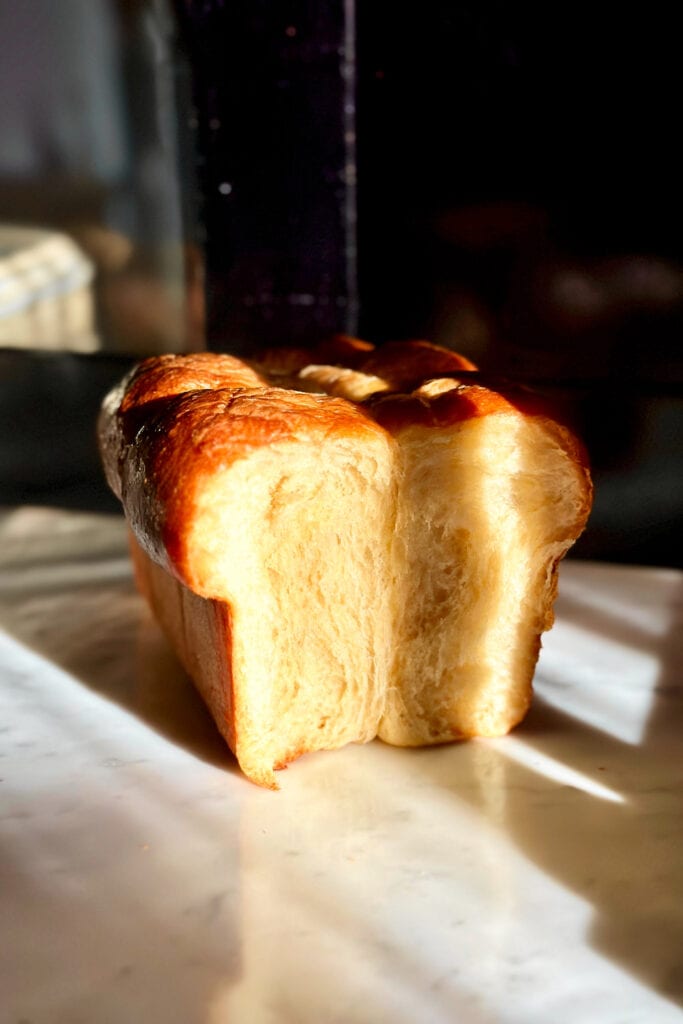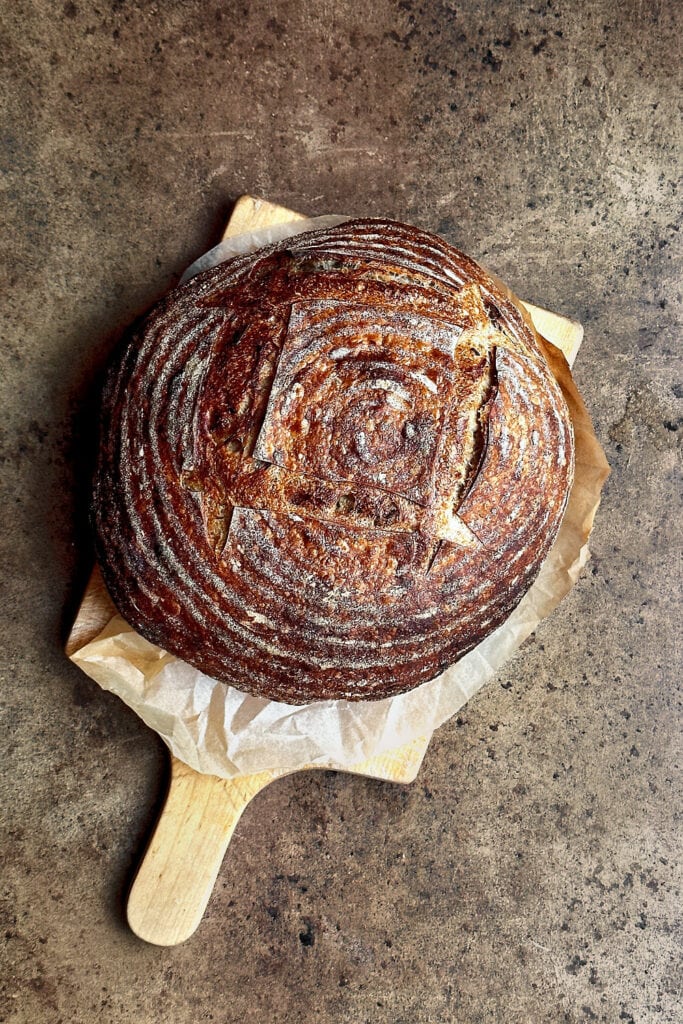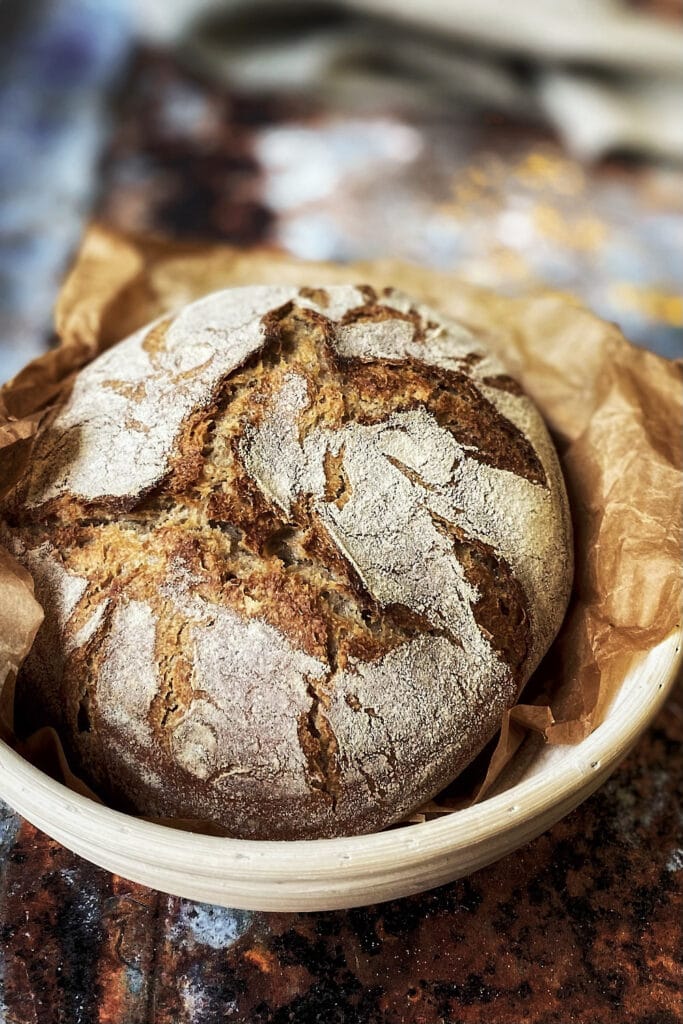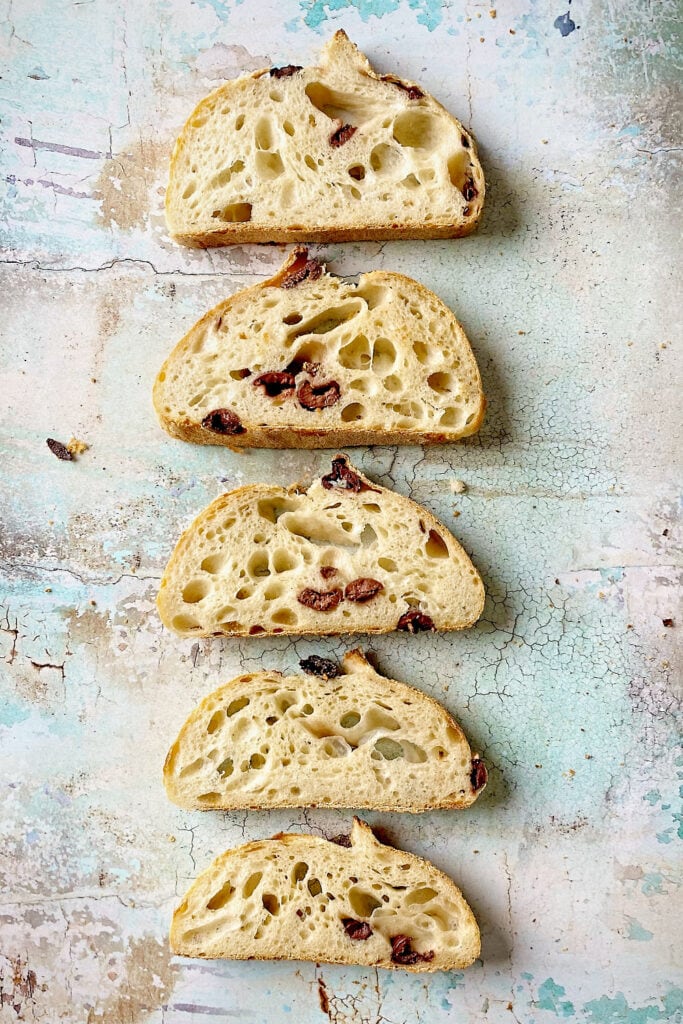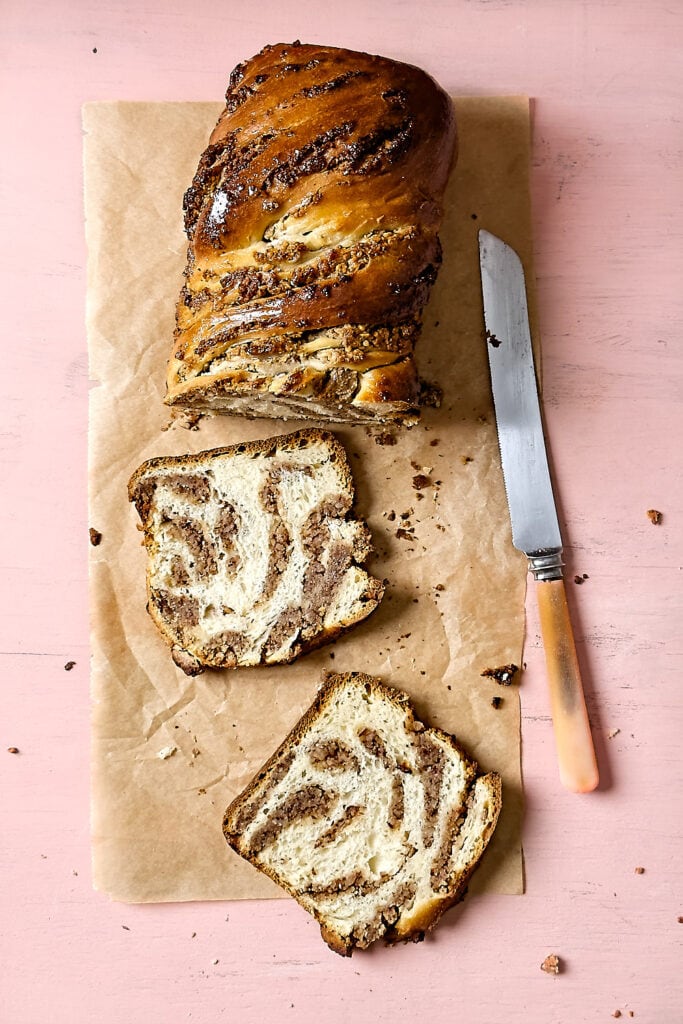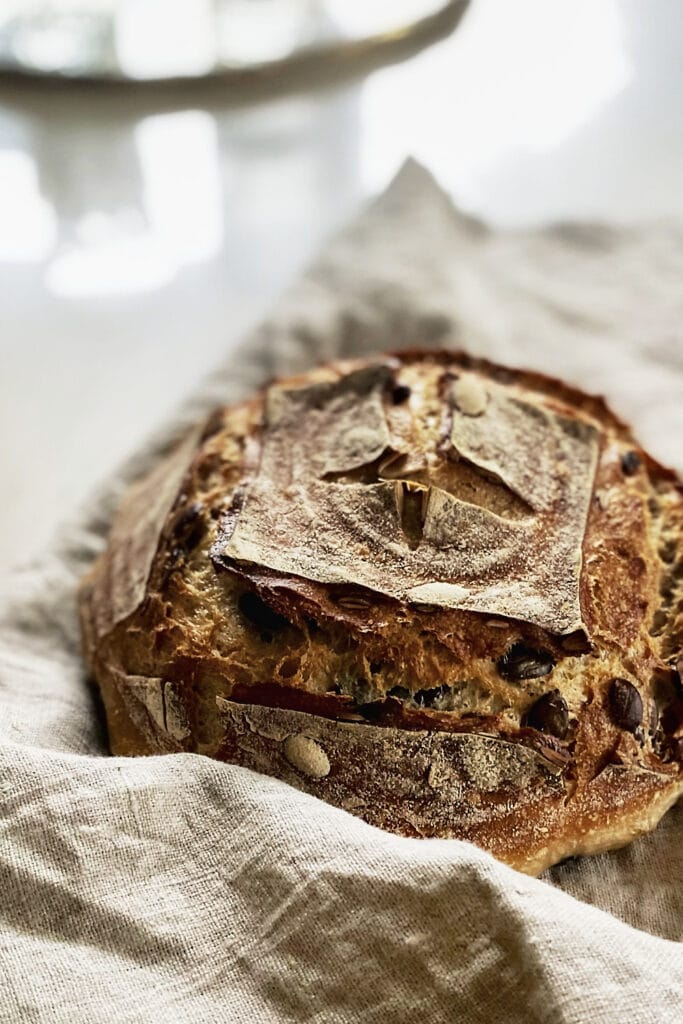Soft and Sweet Sourdough Bread (Swiss Braid)
This soft and sweet sourdough bread has a tender crumb and a rich, buttery taste. Enriched with eggs, butter, and milk, this Swiss-style braided bread is a delicious breakfast delight and also great for making French toast.
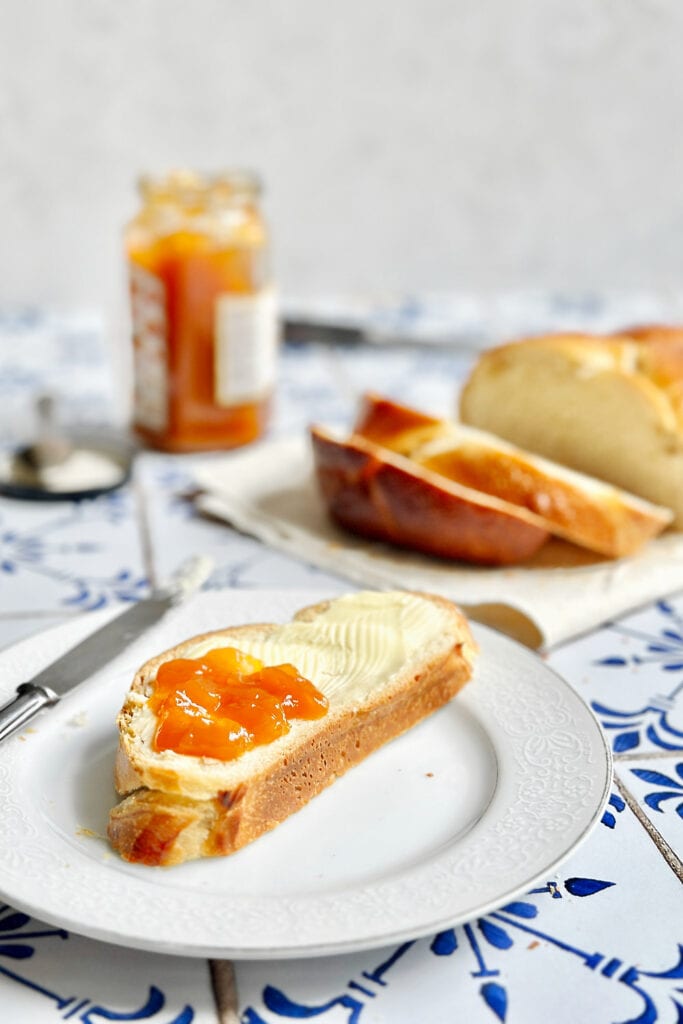
Ingredients and Tools You’ll Need
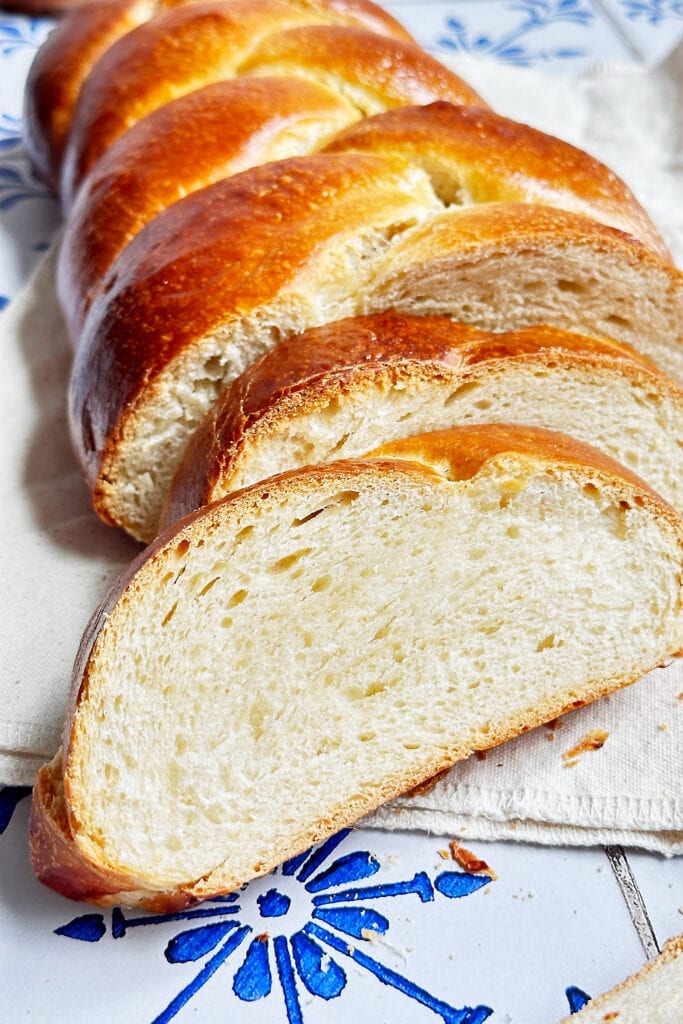
Step-by-Step Instructions
Step 1
The evening before, make the sweet leaven: In a glass jar, mix the sourdough starter, sugar, and milk until the starter is almost fully dissolved. Add the flour and mix until well combined. The leaven will have a stiff, dough-like consistency. You can briefly knead it on the counter to make sure there are no dry patches of flour left. Place it back in the jar, cover it with a lid, and let it rise overnight at room temperature. The next morning, it should be active, bubbly, and have a mild, slightly sweet, and dairy-like aroma.
Step 2
The next morning, make the main dough: In the bowl of your stand mixer, fitted with the paddle attachment, combine the active leaven, milk, egg, and sugar. Mix on medium-high speed until the leaven is fully dissolved. Then, switch to the dough hook and add the flour to the bowl. Knead on low speed until the flour is fully incorporated (about 2 – 3 minutes). Cover the bowl and let the dough rest for about 30 minutes. Meanwhile, cut the butter into small cubes and let it soften at room temperature.
Step 3
Add the salt and knead until the dough becomes smoother and more elastic (about 5 – 10 minutes). Next, while the mixer is running on low speed, slowly add the butter cubes to the bowl, one by one, until fully combined. Once all the butter is incorporated, knead the dough on medium speed until it looks smooth, releases from the sides of the bowl, and clings to the dough hook. Depending on your stand mixer, this may take another 10 – 15 minutes. At this point, the dough should feel smooth and only slightly tacky to the touch but no longer sticky.
Step 4
Shape the dough into a smooth ball and place it in a lightly greased bowl. Cover it with plastic wrap or a damp tea towel and let it bulk ferment in a warm spot (ideally 26 °C – 28 °C) for about 6 hours (the time may vary depending on your temperature – the warmer it is, the faster the dough will rise). The dough does not have to double in size during the first rise, but you should start to see lots of small air bubbles throughout the dough. After about 6 – 8 hours, transfer the dough to the fridge until the next day.
Step 5
The next morning, take the dough out of the fridge and turn it out onto a clean surface. Using a bench scraper, divide it into three equally sized pieces. First, roll the pieces out flat with a rolling pin, and then roll them up into cylinders (see video below). Cover the dough pieces with a damp towel and let them rest for about 30 minutes. During this time, the gluten can relax, which makes it easier to roll the dough out into strands afterwards.
Step 6
Line a baking tray with a piece of parchment paper and set it aside. After the bench rest, roll the pre-shaped dough pieces out into long strands (about the length of your baking tray) and shape a braided loaf. Place the loaf on the prepared baking tray and cover it with a damp tea towel. Let it proof in a warm spot for 3-4 hours for the final rise until it has visibly increased in size and looks pillowy and puffy.
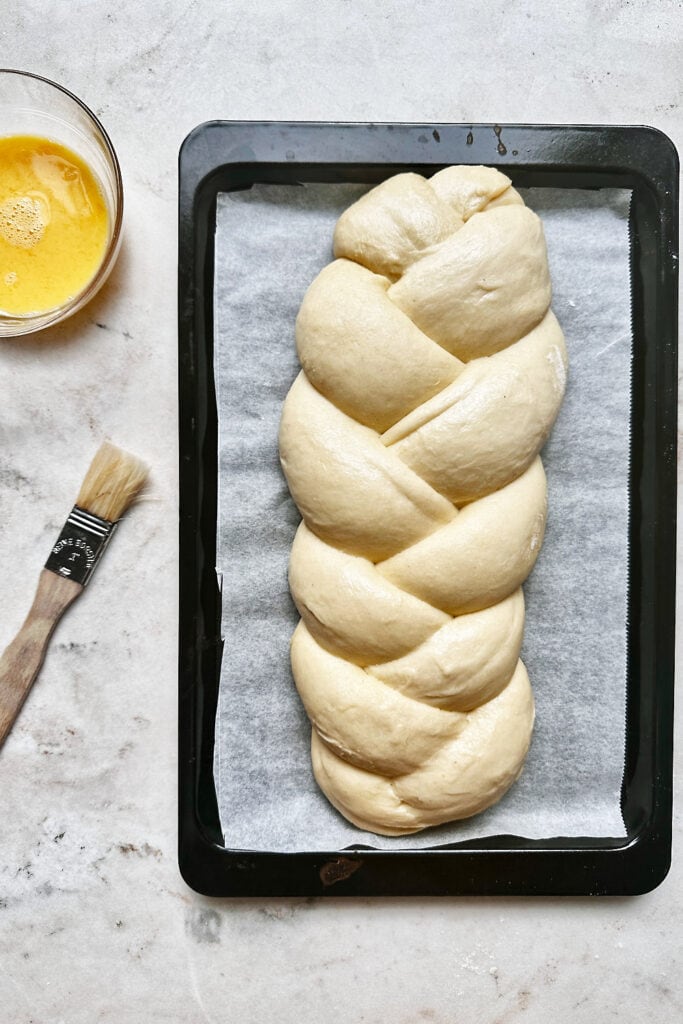
Step 7
Pre-heat the oven to 170 °C convection bake or 180 °C conventional bake. Brush the top of the dough with egg wash and bake the bread for about 25 – 30 minutes until the surface is golden brown and the internal temperature reaches 93 °C. If the top browns too quickly, loosely cover it with aluminum foil. Let the bread cool completely on a wire rack before slicing.
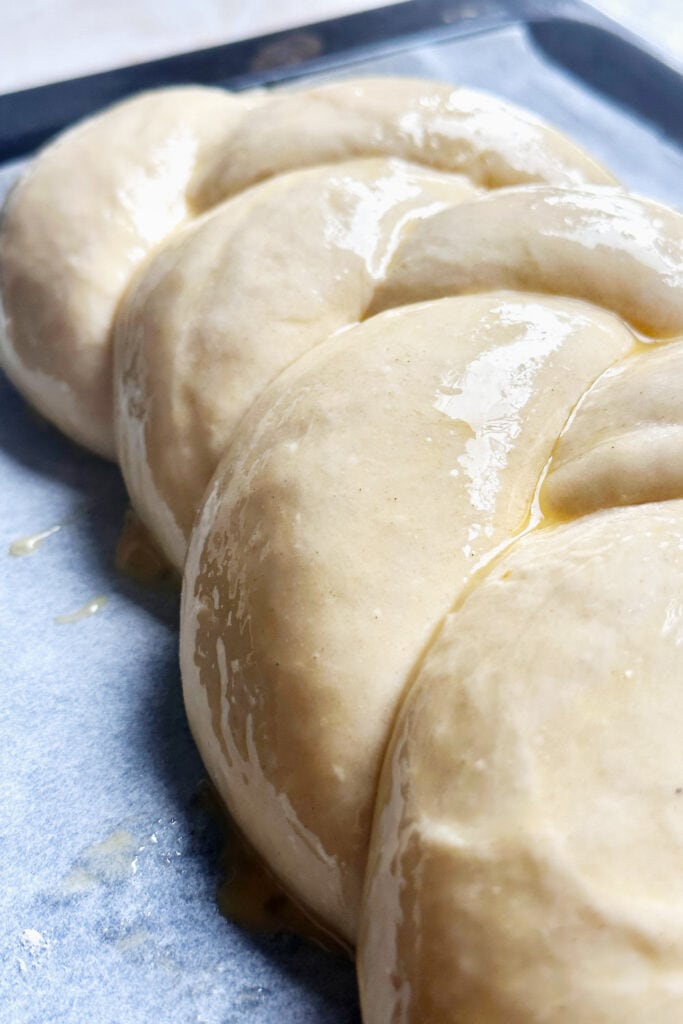
Tips & Tricks
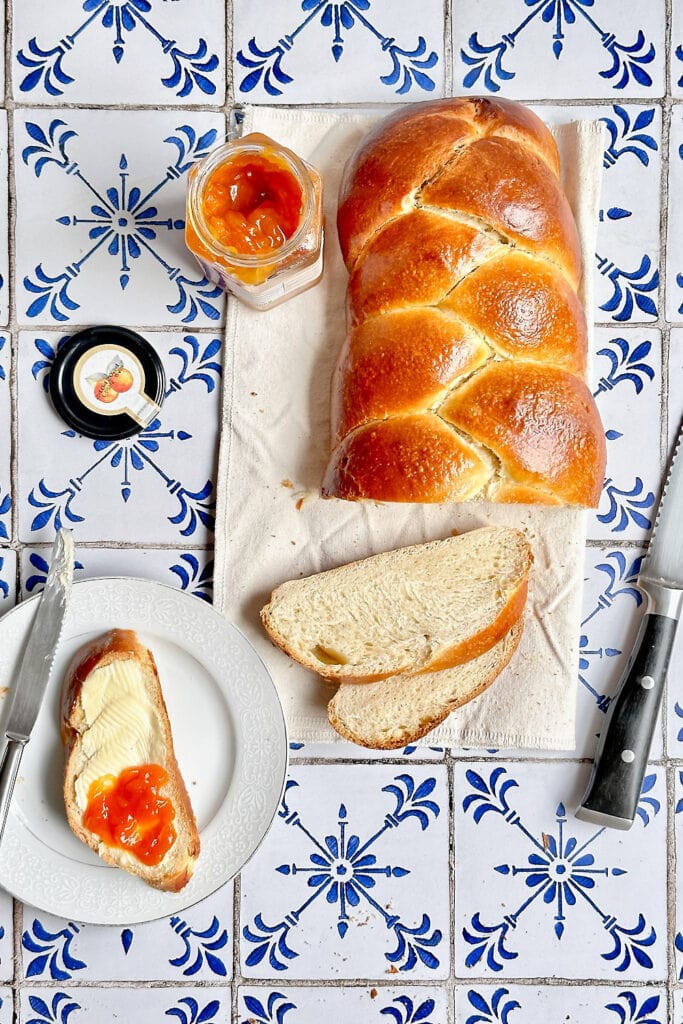
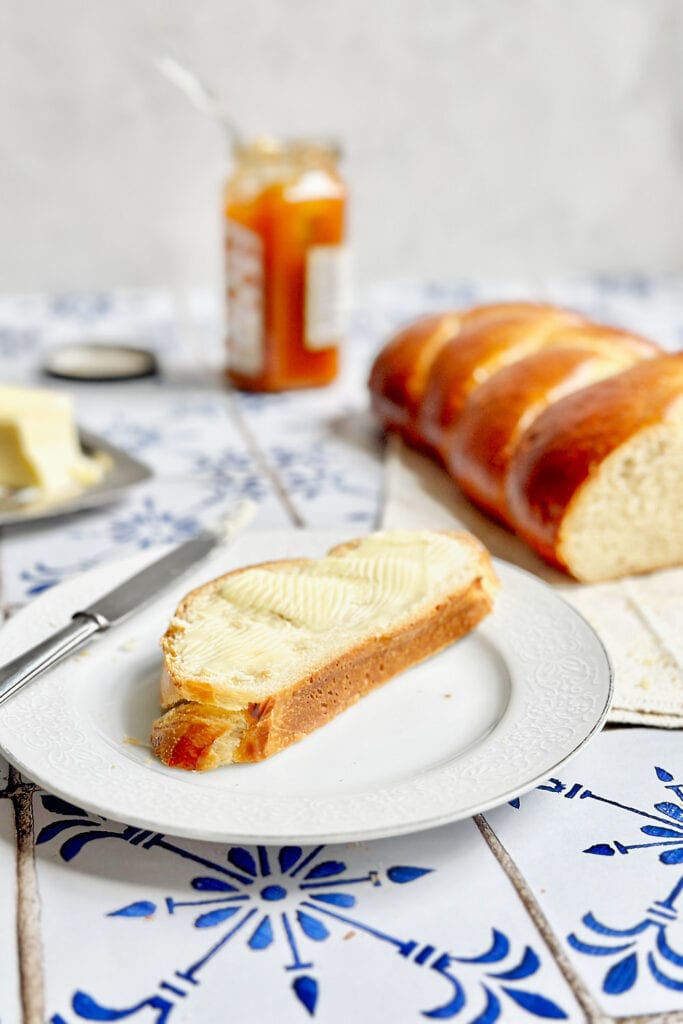
More Sourdough Recipes You May Like:
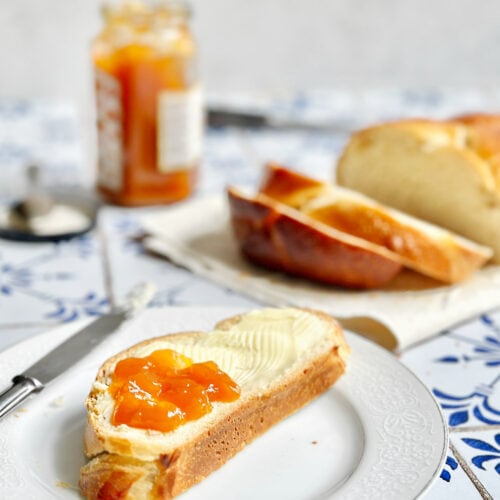
Soft and Sweet Sourdough Bread (Swiss Braid)
Equipment
- Digital kitchen scale
- Rolling Pin
- Stand mixer with dough hook and paddle attachment
- Dough proofer optional, for and ideal proofing environment and faster fermentation.
- Pastry brush
- Parchment paper
Ingredients
For the stiff sweet leaven:
- 35 g sourdough starter
- 35 g milk
- 15 g sugar
- 70 g flour
For the main dough:
- All of the sweet, active leaven
- 200 ml milk
- 1 egg
- 100 g sugar
- 400 g flour
- 10 g salt
- 125 g softened butter
For the egg wash:
- 1 egg
Instructions
- The evening before, make the sweet leaven: In a glass jar, mix the sourdough starter, sugar, and milk until the starter is almost fully dissolved. Add the flour and mix until well combined. The leaven will have a stiff, dough-like consistency. You can briefly knead it on the counter to make sure there are no dry patches of flour left. Place it back in the jar, cover it with a lid, and let it rise overnight at room temperature. The next morning, it should be active, bubbly, and have a mild, slightly sweet, and dairy-like aroma.
- The next morning, make the main dough: In the bowl of your stand mixer, fitted with the paddle attachment, combine the active leaven, milk, egg, and sugar. Mix on medium-high speed until the leaven is fully dissolved. Then, switch to the dough hook and add the flour to the bowl. Knead on low speed until the flour is fully incorporated (about 2 – 3 minutes). Cover the bowl and let the dough rest for about 30 minutes. Meanwhile, cut the butter into small cubes and let it soften at room temperature.
- Add the salt and knead until the dough becomes smoother and more elastic (about 5 – 10 minutes). Next, while the mixer is running on low speed, slowly add the butter cubes to the bowl, one by one, until fully combined. Once all the butter is incorporated, knead the dough on medium speed until it looks smooth, releases from the sides of the bowl, and clings to the dough hook. Depending on your stand mixer, this may take another 10 – 15 minutes. At this point, the dough should feel smooth and only slightly tacky to the touch but no longer sticky.
- Shape the dough into a smooth ball and place it in a lightly greased bowl. Cover it with plastic wrap or a damp tea towel and let it bulk ferment in a warm spot (ideally 26 °C – 28 °C) for about 6 hours (the time may vary depending on your temperature – the warmer it is, the faster the dough will rise). The dough does not have to double in size during the first rise, but you should start to see lots of small air bubbles throughout the dough. After about 6 – 8 hours, transfer the dough to the fridge until the next day.
- The next morning, take the dough out of the fridge and turn it out onto a clean surface. Using a bench scraper, divide it into three equally sized pieces. First, roll the pieces out flat with a rolling pin, and then roll them up into cylinders (see video below). Cover the dough pieces with a damp towel and let them rest for about 30 minutes. During this time, the gluten can relax, which makes it easier to roll the dough out into strands afterwards.
- Line a baking tray with a piece of parchment paper and set it aside. After the bench rest, roll the pre-shaped dough pieces out into long strands (about the length of your baking tray) and shape a braided loaf. Place the loaf on the prepared baking tray and cover it with a damp tea towel. Let it proof in a warm spot for 3-4 hours for the final rise until it has visibly increased in size and looks pillowy and puffy.
- Pre-heat the oven to 170 °C convection bake or 180 °C conventional bake. Brush the top of the dough with egg wash and bake the bread for about 25 – 30 minutes until the surface is golden brown and the internal temperature reaches 93 °C. If the top browns too quickly, loosely cover it with aluminum foil. Let the bread cool completely on a wire rack before slicing.
Video
@notjustfood_blog Buttery, soft and slightly sweet ✨ Perfect for breakfast! Get the recipe on my blog. #sourdough #sweetsourdough #enricheddough #brioche #fyp #breadbaking #baking #recipe ♬ 3:15 (Slowed Down + Reverb) – Russ

